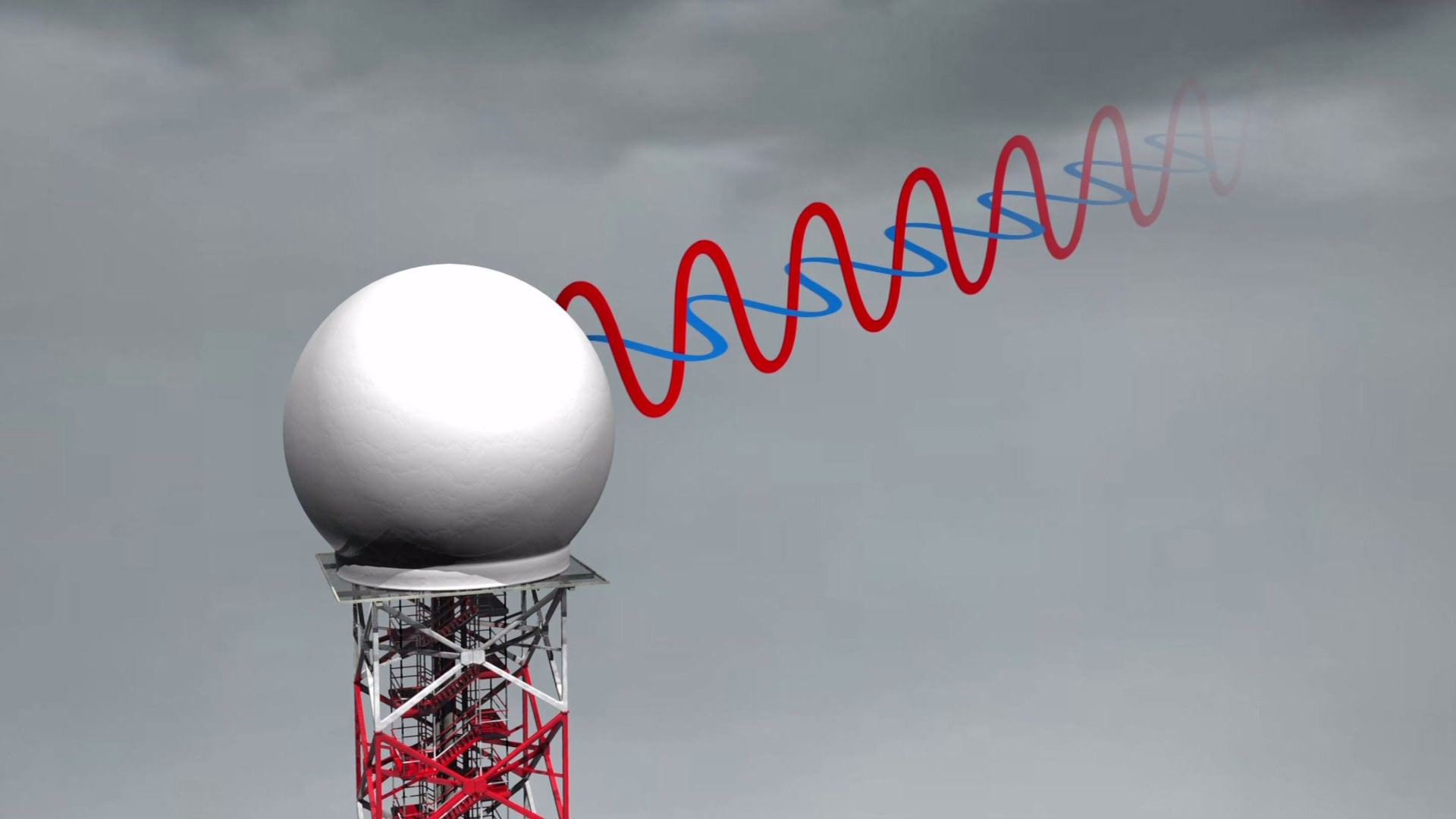As a devastating tornado hit our area in 1996, the radar beam was 7,000ft feet high and it took nearly ten minutes for a complete scan to finish.
When a strong tornado was occurring in Mountainburg, Arkansas, the radar beam was just over 1,000 feet above the ground and we were getting new low-level data every one to two minutes. This is largely due to two advancements; the installation of the KSRX radar in Fort Smith, Arkansas and the upgrade of that radar to dual polarization in 2013.
With dual polarization, we often know a tornado is on the ground before the first report ever comes in. The product is called "Correlation Coefficient" and works by detecting the size of the particles lofted in the atmosphere.
Traditional Doppler sends a pulse of energy out in ONE direction detecting rain, snow, and hail; however, dual polarization sends pulses of energy out in TWO directions: horizontal and vertical. This gives us the size of raindrops in the air. Tornado debris doesn’t resemble anything that occurs naturally inside the atmosphere. This tells us almost instantly that the tornado is on the ground and doing damage because debris sizes are actually be detected by the radar beam.
We spoke with Steve Piltz from the National Weather Service office in Tulsa: “If it’s chaotic debris kicked up in the air, it’s going to be two different signals and radar makes the comparison and says something chaotic is going on in there, there’s something different than raindrops in the radar beam” “On the really nasty ones you know you’re seeing bricks and wood and glass and everything that’s being turned up by the tornado."
It’s not only changed the way we cover tornadoes on TV but it’s changed the way warnings are issued. With dual polarization radar we can literally see-the-wind.
“There are sometimes a tornado happens out in a rural area and we don’t get immediate reports and we’re left wondering. With this we can say with more certainty: It’s there. You need to take cover” said Steve Piltz.
Many of our tornadoes happen at night, are wrapped in rain, or spin-up quickly along a line. The tornado debris signature gives you longer warning time and more urgency when a storm is moving into an area where you live.
-Garrett

